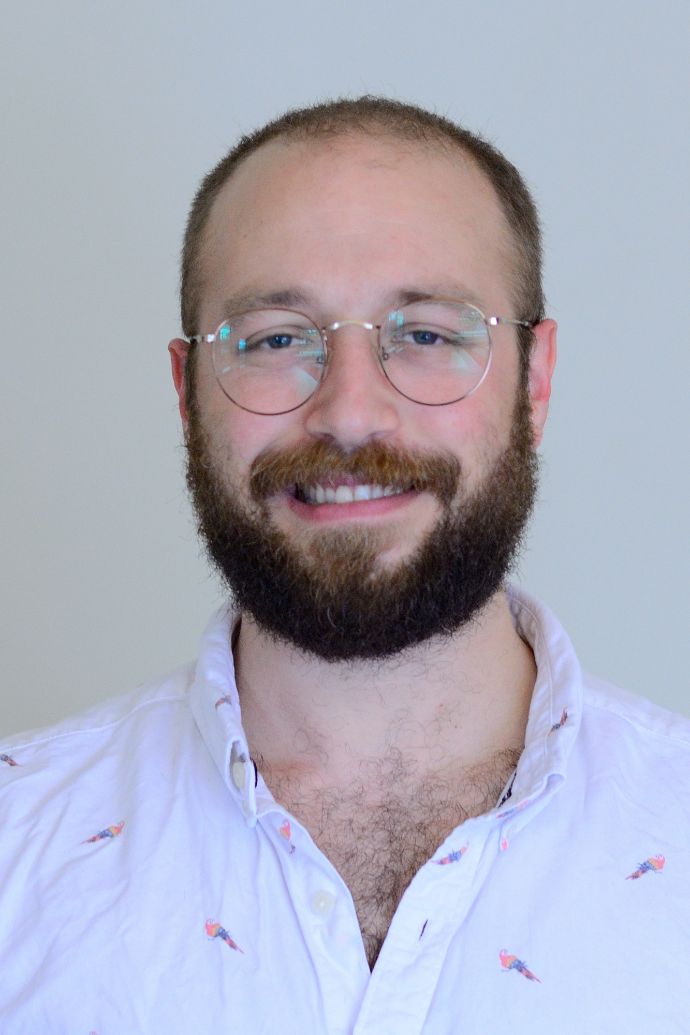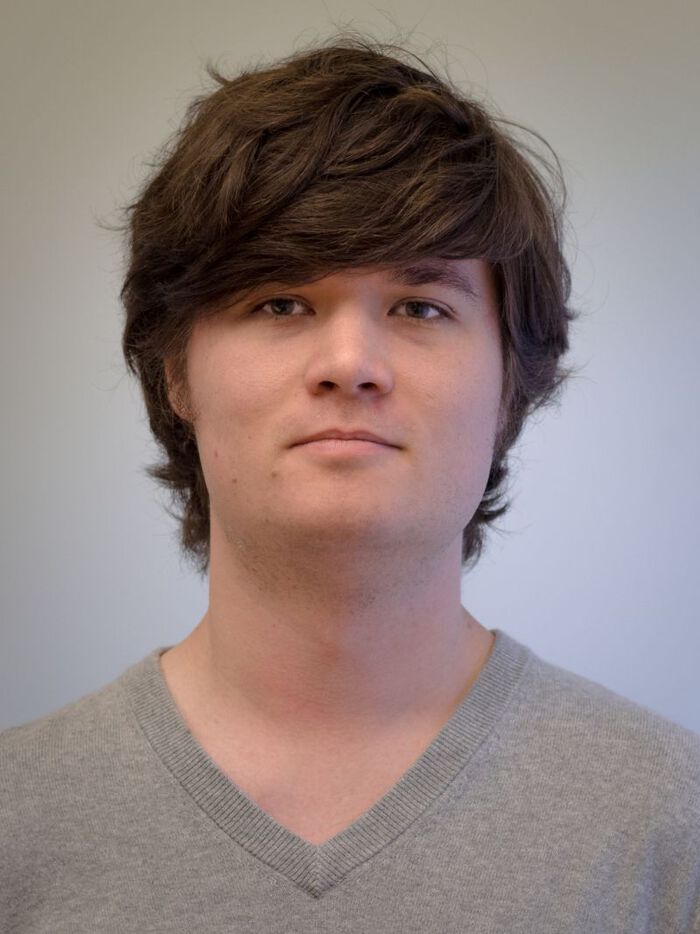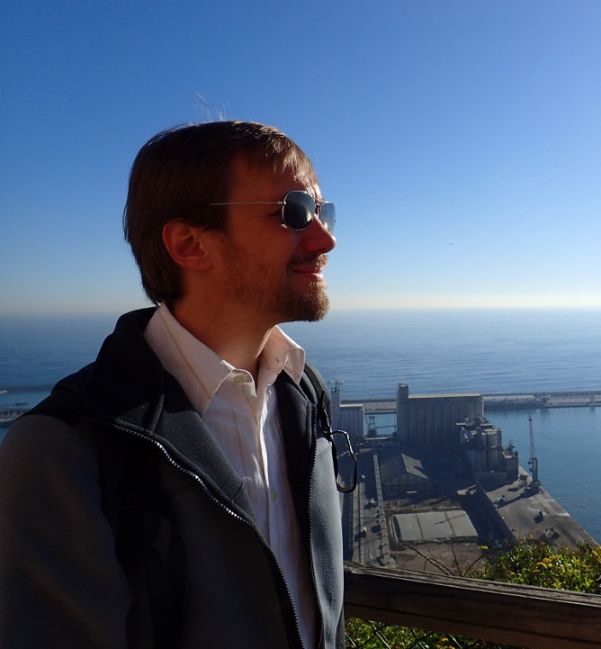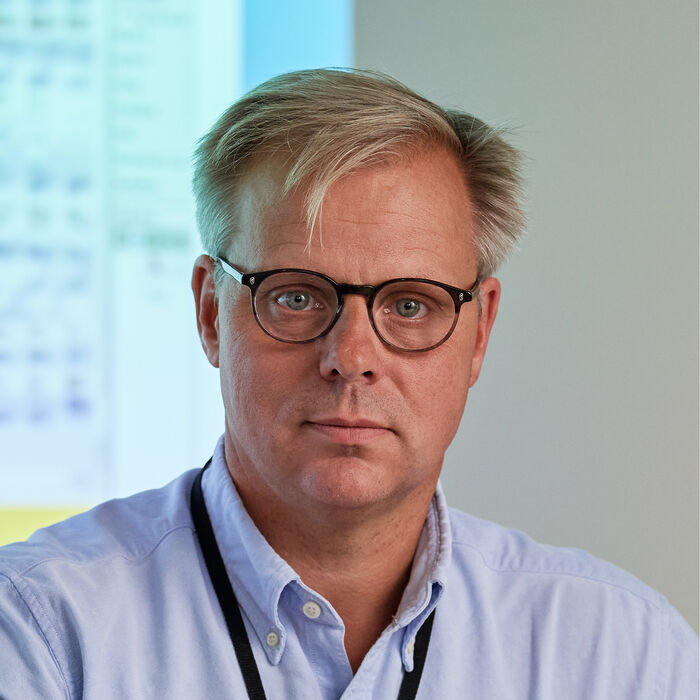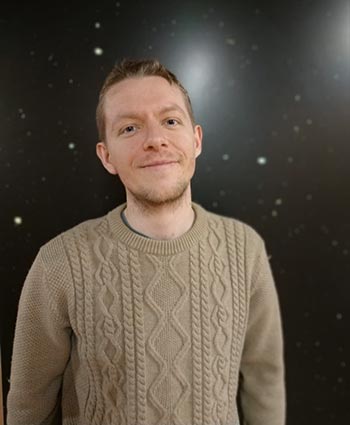Tidlegare gjesteforelesninger og seminarer - Side 18
Abstract: This talk is about the non-integer (fractional) derivative, its mathematical formulation by Abel in 1823, and present-day applications in modeling power-law behavior. These applications are in acoustics of complex media like tissue and sediments as well as in rheology, turbulence, and dielectrics. It will build on my book “Waves with Power-Law Attenuation”, Springer, 2019.
The talk will be streamed online. Please contact "timokoch at uio.no" for the Zoom link. This talk is part of the Mechanics Lunch Seminar series. Bring-your-own-lunch and lots of questions.
Duncan Watts, postdoctoral fellow at Institute of Theoretical Astrophysics, UiO.
C*-algebra seminar talk by Johannes Christensen (KU Leuven)
Abstract: Gravitational settling of a droplet in air onto a soft substrate is a ubiquitous event relevant to many natural processes and engineering applications. We study this phenomenon by developing a three-phase lubrication model of droplet settling onto a solid substrate coated by a thin, soft compressible layer of elastic material. By combining scaling analysis, analytical methods and numerical simulations we elucidate how the resulting droplet dynamics is affected by the soft layer. We discuss extensions to droplet settlings onto thin viscous liquid films and elastic sheets. Our results provide new insight into the coupled interactions between droplets and solids coated by a thin film of a soft material.
Talk can be followed online on Zoom as well as in person. Please contact "timokoch at uio.no" for the Zoom link. This talk is part of the Mechanics Lunch Seminar series. Bring-your-own-lunch and lots of questions.
Mathew Galloway, Institute of Theoretical Astrophysics, University of Oslo.
Lectures by visiting guest researchers Mesele Yihune Tamene, Tilaye Wube Hailemariam, Nega Tassie Abate, and Gashaw Tilahun Desta
Maintenance plays a crucial role in ships and especially in the vital electric propulsion system. Intelligent predictive maintenance idealistically aims at preventing system failures and minimizing needless repairs, i.e., predicting failure likelihood and time to failure while providing the crew explainable predictions and recommending the best action for timely intervention. This presentation will cover a relevant work in collaboration with Sensor Systems in BigInsight, particularly a paper published under https://doi.org/10.1109/TII.2022.3144177. The failure prediction approach is driven by event logs, which include warnings, alarms, and operational information that describe all the happenings onboard the ship. The failure prediction objective is turned into classification and regression tasks; however, the training data pose three challenges. The events are irregular textual messages. The training data samples are not labelled. The datasets are extremely imbalanced, due to sparse failure events and multiple failure modes. The problem is casted into a weakly supervised machine learning framework. In a multiple instance learning process, the ungiven data labels are learned recursively while fitting the model parameters using deterministic annealing. The overall approach was tested on real ship data, and it successively forecasted few propulsion failures with explainable causes.
High-Resolution, 3D Imaging of fish mucosal immunology: Discovery of a new lymphoid tissue, organ, and nexus
Dr. Julien Resseguier (Researcher, FYSCELL / Department of Immunology, Faculty of Medicine, University of Oslo)
By Anna Sturrock from the University of Essex, UK
Abstract: We investigate the simulation of a rising bubble and a stationary droplet interaction to gain a better understanding of the rising dynamics and the morphology changing of bubble-droplet aggregate. A detailed study is conducted on the interaction process under different-size bubbles with various combinations of spreading factors. The current simulation framework consists of the conservative phase-field Lattice Boltzmann equation (LBE) for interface tracking and the velocity-pressure LBE for hydrodynamics. We simulate the contact line dynamics to confirm the method's accuracy. We further investigate the morphology changing of two contact droplets under different combinations of spreading factors and depict the final morphologies in a diagram. The separated, partially engulfed and complete engulfed morphologies can be replicated by systematically altering the sign of the spreading factors. The rising bubble and droplet interaction is simulated based on different final morphologies by adding a body force. The results show that the aggregate with double emulsion morphology can avoid distortion and maintain a greater terminal velocity than the aggregate with partially engulfed morphology.
Talk is online on Zoom. Please contact "timokoch at uio.no" for the Zoom link. This talk is part of the Mechanics Lunch Seminar series. Bring-your-own-lunch and lots of questions.
Deep learning (DL) has had unprecedented success and is now entering scientific computing with full force. However, current DL methods typically suffer from instability, even when universal approximation properties guarantee the existence of stable neural networks (NNs). In this talk we will show that there are basic well-conditioned problems in scientific computing where NNs with great approximation qualities are proven to exist, however, there does not exist any algorithm, even randomised, that can train (or compute) such a NN to even 1-digit of accuracy with a probability greater than 1/2. These results provide basic foundations for Smale’s 18th problem ("What are the limits of AI?") and imply a potentially vast classification theory describing conditions under which (stable) NNs with a given accuracy can be computed by an algorithm. We begin this theory by initiating a unified theory for compressed sensing and DL, leading to sufficient conditions for the existence of algorithms that compute stable NNs in inverse problems. We introduce Fast Iterative REstarted NETworks (FIRENETs), which we prove and numerically check (via suitable stability tests) are stable. The reference for this talk is: https://arxiv.org/abs/2101.08286 (to appear in Proc. Natl. Acad. Sci. USA).
Abstract: The fungal kingdom is one of the most species-rich organismal groups, containing up to 6 million species worldwide with a large diversity of ecosystem functions. Multicellularity has evolved independently in fungi, and over time many different growth forms and structures have originated. I will present some basics on fungal growth and the formation of complex multicellular structures.
Online participation is possible too. Please contact "timokoch at uio.no" for the Zoom link. This talk is part of the Mechanics Lunch Seminar series. Bring-your-own-lunch and lots of questions.
Tony Mroczkowski, European Southern Observatory (ESO), München.
By Rebecca Taylor from Trent University, Ontario, Canada
Super-resolution is a hot topic in current day Machine Learning. The origin of the methodology dates back to applications in seismic imaging. I discuss the evolution from the early days and highlight some papers which have given new theoretical insights along the way. I illustrate the bridge between traditional convex optimization and current day convolutional neural nets. Along the way I show some examples where we have used this for current day applications in seismic imaging.
Thomas Montandon, Astroparticule et Cosmologie, Université Paris Diderot (France).
By Sandra Garces Pastor from UiT The Arctic University of Norway
By Micah Dunthorn from the Natural History Museum, University of Oslo
Abstract: Transport and mixing in multiphase flow through porous media plays a key role in a range of biological, geological, and engineered systems. Here, we use numerical simulations to investigate the effect of intermittent multiphase flow on fluid stretching and folding, a fundamental mechanism driving solute mixing and reaction in porous media. We show that, in contrast to steady single-phase flows, the concurrent flow of two immiscible phases induces chaotic mixing, characterized by exponential stretching in the pore space. The stretching rate is found to decay with increasing capillary number, implying that the increasing flow intermittency observed at lower capillary numbers enhances the mixing efficiency. We propose a mechanistic model to link the basic multiphase flow properties to the chaotic mixing rate, opening new perspectives to understand mixing and reaction in multiphase porous media flows. The results presented here form part of the background for the recently started RCN-funded project M4: Mixing in Multiphase flow through Microporous Media, which will also be introduced.
This talk is part of the Mechanics Lunch Seminar series. Bring-your-own-lunch and lots of questions.
Abstract: The cerebral circulation must ensure continuous blood perfusion of the brain which is the biggest oxygen consumer in the human body. It must also provide mechanisms for adaptability to changing oxygen demand as well as resilience to local blockages. We will look at such mechanisms at the level of the microcirculation where the mechanics of blood flow is dominated by red blood cells. We will find that red blood cells do not only play the role of oxygen carriers, but that they are an important element of blood flow regulation itself. To this end, we will compare results from in vitro studies in microfluidic chips to theoretical and computational models and to in vivo data from mice. We will derive local auto-regulation mechanisms for blood flow and will study how local modifications in the vascular network can modify the global hematocrit distribution. These results will emphasize the relevance of red blood cell mechanics and microvascular network geometry in cerebral blood perfusion.
This talk is part of the Mechanics Lunch Seminar series. Bring-your-own-lunch and lots of questions.
Prof. Dr. Sergey V. Ketov
Tokyo Metropolitan University and Kavli Institute for the Physics and Mathematics of the Universe, The University of Tokyo, Japan.
